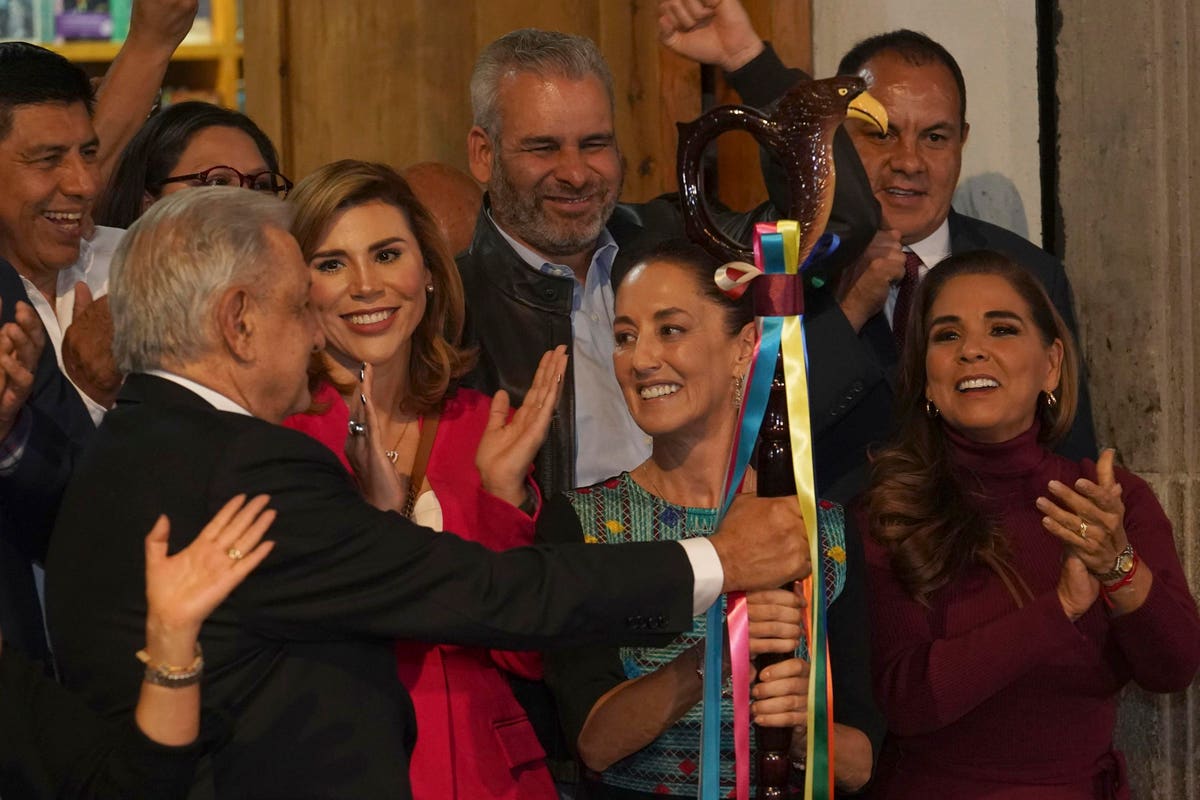We now know the two frontrunners for Mexico’s 2024 election, due to take place five months before the race for the White House. The two are women, a first in the country’s history. Claudia Sheinbaum leads the polls and is expected to continue the incumbent’s legacy. Senator Xochtil Galvez is challenging her. For the US, it will be crucial to understand who Sheinbaum is, as she could come to lead the country that is becoming its main trading partner.
America’s main partnership
With the backdrop of the elections, analysts are highlighting an interesting trade phenomenon. In the first half of this year, Mexico became the first source of US imports with a volume of $236 billion. China, which used to be the primary source, is now the third with $203 billion. Canada has taken the second place with $210 billion. The change is both a result of rising trade with Mexico and declining volumes coming from China.
There are different explanations. In April, the Federal Reserve Bank of Dallas released an interesting report, countering against the hypothesis of nearshoring with another: that due to the trade war between the Washington DC and Beijing, Chinese capital is circumventing tariffs via Mexico. It would then still be entering the North American Free Trade Agreement (NAFTA), and thus be able to sell into the US.
Trade relations are also complicated between the two American powerhouses. The Biden administration is acting to counter Mexico’s protectionist policies. On September 6th, Reuters published the following exclusive: the Biden administration has asked US energy firms to prepare affidavits documenting how Mexico’s protectionist policies disrupted their investment.
Claudia Sheinbaum: Resource nationalism and the energy transition
On September 6th, Sheinbaum was announced as the candidate to succeed President Andres Manuel Lopez Obrador; the constitution does not allow for a second term. She has headed the government of Mexico City since 2018. In the past, she also served as Secretary of Environment in the federal district, when Lopez Obrador was the governor, from 2000 to 2006.
Sheinbaum has been a leading voice behind mining and energy policies, notably the nationalisation of lithium. She has made declarations that it is crucial for the state not only to lead in extraction, but also manufacturing of metals. Multinational corporations are not sure how this will play out, and what will be their role partnering with the state.
Recently, a key point of friction between Mexico’s federal government and foreign investors has been over lithium, a key component of batteries. The country not only holds significant deposits, but it is also an important manufacturing hub. Lithium deposits were nationalised in April 2022, and in February 2023 the president handed responsibility over them to the Ministry of Energy, through the new public enterprise LitioMX.
In 2021, General Motors’ managing director in Mexico, Francisco Garza, warned that the corporation would pull out of the country if it did not follow through on the energy transition. Mexico could be bound to become an important hub for electric vehicle (EV) manufacturing. Ford, Jetour, BMW, General Motors, and Tesla are building or re-purposing factories to produce EVs in Mexico.
Perhaps, a point where Sheinbaum could differ from the current president is over the energy transition. At the start of his term, Lopez Obrador criticised global efforts towards replacing fossil fuels, and has been a champion for the state-run oil company, Petroleos Mexicanos (Pemex). As an academic, Sheinbaum has published work on energy, the environment, and sustainable development.
Mexico is now seeking to fulfill 35% of its energy needs from renewables and nuclear sources by 2024. By 2022 it had reached 29%, and projections are for 33% this year. There are different estimates, but the goal could be reached if the current administration doubles down on efforts. Some analysts argue it will be reached by 2025.
Lithium Triangle: Three directions.
The “Lithium Triangle” countries each take distinct models of how lithium mining could be managed. They are Argentina, Bolivia and Chile, and together could account for over half of the world’s lithium resources, based on data from the United States Geological Survey. Resources are different from reserves, in that the latter only include the deposits that can be economically mined.
Mexico is set to follow Bolivia’s model, whereby the state manages production through a public company. An alternative could be that used by Chile, where the state leases the exploitation of the resource to private companies through bidding. In Argentina, miners must partner with provincial governments, who are required to hold a minority stake in projects.
So far, Bolivia is the smallest producer of the three by a large margin, despite estimates that it could have the largest resources in the world – 23 million tonnes. However, the South American country’s mining industry is less developed, the country has worse infrastructure and investors have less experience than in the rest of the region. Whichever path Mexico ends up choosing, it will certainly benefit from its proximity to the US and membership of NAFTA.
Read the full article here





